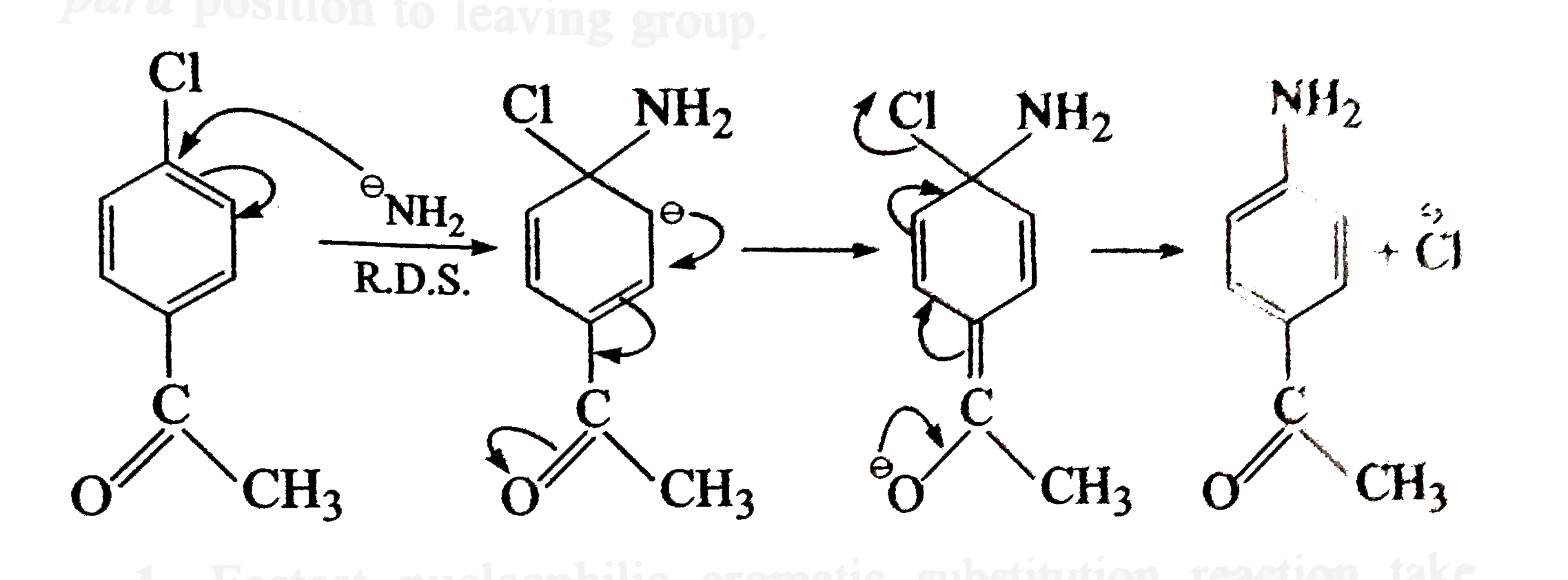Amongst the given species, the best leaving group in a nucleophilic substitution reaction is: Solution in Malayalam
OH−



The correct Answer is:C
The weaker the leaving base, the more reactivity of nucleophilic substitution reaction. Amongst the given bases,  is the weakest base.
is the weakest base.
Topper's Solved these Questions
- ISOMERISM AND REACTION MECHANISMBOOK - BRILLIANT PUBLICATIONCHAPTER - ISOMERISM AND REACTION MECHANISMEXERCISE - LEVEL - III
8 Videos
- ISOMERISM AND REACTION MECHANISMBOOK - BRILLIANT PUBLICATIONCHAPTER - ISOMERISM AND REACTION MECHANISMEXERCISE - LEVEL - III (Multiple choice answer type)
15 Videos
- ISOMERISM AND REACTION MECHANISMBOOK - BRILLIANT PUBLICATIONCHAPTER - ISOMERISM AND REACTION MECHANISMEXERCISE - LEVEL - III (Linked Comprehension Type) (Paragraph III )
3 Videos
- HYDROGENBOOK - BRILLIANT PUBLICATIONCHAPTER - HYDROGENEXERCISE - LEVEL -III ( Linked Comprehension Type)
8 Videos
- ORGANIC CHEMISTRY : SOME BASIC PRINCIPLES - PART I (NOMENCLATURE) BOOK - BRILLIANT PUBLICATIONCHAPTER - ORGANIC CHEMISTRY : SOME BASIC PRINCIPLES - PART I (NOMENCLATURE) EXERCISE - LEVEL-III
45 Videos
Similar Questions
Equal amount of an RCl(C4H9Cl) is reacted at the same temperature with equal volume of 0.2 Mand 0.4M. solution of KOH, respectively, in two separate experiments. The time taken for the reaction of 50% of (C4H9Cl) was found to be same, the alkyl halide is:
View SolutionWhich of the following are S2N reactions?
View SolutionWhich of the following is most basic?
View SolutionThe volume of 10 volume H2O2, solution that decolourises 200 ml of 2NKMnO4, solution in acidic medium is:
View SolutionGive the IUPAC name of the following compound:

View SolutionIn the following compounds nucleophile and the leaving groups are in the same molecule : these dual nature species can undergo intramolecular and intermolecular nucleophilic substitution Intramolecular substitution reaction is possible in :
View SolutionFor a typical nucleophilic aromatic substitution reaction to take place .
1. Nucleophilic atom should be of oxygen nitrogen or sulphur.
2. Leaving groups should be halide.
3. There should be strong electron withdrawing at ortho and para position to leaving group.

Fastest nucleophilic aromatic substitution reaction take place in :
View SolutionFor a typical nucleophilic aromatic substitution reaction to take place .
1. Nucleophilic atom should be of oxygen nitrogen or sulphur.
2. Leaving groups should be halide.
3. There should be strong electron withdrawing at ortho and para position to leaving group.

Compare rate of nucleophilic aromatic substitution reaction in following reactants:

View SolutionThe correct order of leaving group ability in a nucleophilic substitution reaction is
View SolutionNucleophilic Substitution Introduction and Leaving Group
View SolutionIn nucleophilic substitution reaction, the order of halogens as leaving group should be :
View SolutionWhich is the best leaving group in a nucleophilic substitution reaction?
View SolutionNucelophilic aliphatic substitution reaction is given by those compounds which have nucleophiic groups as leaving. Less is the basicity of the leaving group. More is its leaving power. Leaving group in the form of nucleophile (charged of neutral) Leaving power of which grops is maximum ? Leaving power of which group is maximum ?
View SolutionNucelophilic aliphatic substitution reaction is given by those compounds which have nucleophiic groups as leaving. Less is the basicity of the leaving group. More is its leaving power. Leaving group in the form of nucleophile (charged of neutral) Leaving power of which grops is maximum ? Leaving power of which group is maximum ?
View SolutionNucelophilic aliphatic substitution reaction is given by those compounds which have nucleophiic groups as leaving. Less is the basicity of the leaving group. More is its leaving power. Leaving group in the form of nucleophile (charged of neutral) Leaving power of which groups is maximum ? Which one of the following compounds may NOT given SN rection ?
View SolutionWhich of the following is the best leaving in a nucleophilic substitution reaction
View Solution
